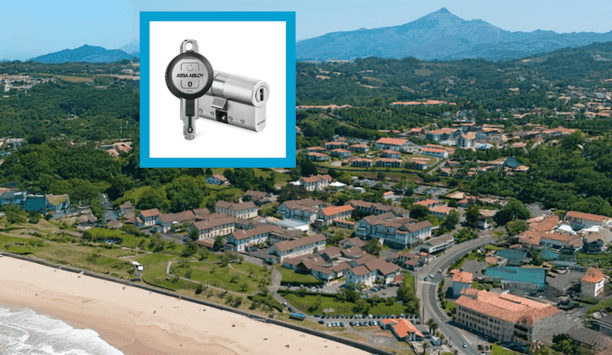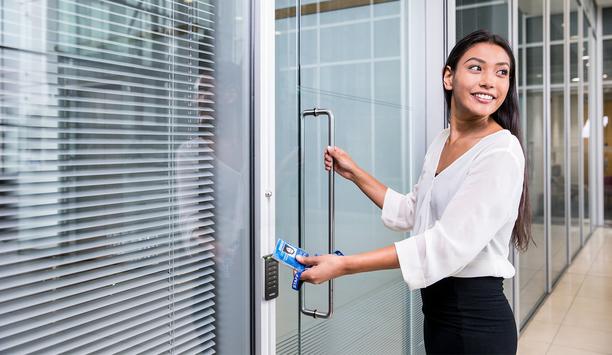Cloud-based technology can reduce IT costs, streamline application management and make infrastructure more flexible and scalable. So, it’s no surprise that cloud video surveillance solutions (also known as video surveillance as a service or VSaaS) are gaining momentum in a big way. In fact, according to recent reports, the VSaaS market is forecasted to increase at a compound annual growth rate of 10.4% by 2025.
But some company owners may wonder – what services does a cloud model deliver and is such a solution right for my business? This article aims to help you determine what cloud video surveillance solution is right for your business and the benefits you can enjoy if you decide to deploy a VSaaS solution.
Full cloud-based recording vs cloud-managed
First, a bit of clarification on cloud video surveillance models, as definitions can vary from provider to provider. A full cloud-based recording solution is one in which both video recording and management are done offsite (for example, cameras streaming directly to the cloud). While this model can be a good option for some, many large enterprise businesses simply don’t have the bandwidth capacity or network resources required to upload all of their videos to the cloud. Even with the bandwidth capacity, this can be a cost-prohibitive model when hundreds or thousands of IP cameras are involved.
A full cloud-based recording solution is one in which both video recording and management are done offsite
But that doesn’t mean enterprise businesses can’t take advantage of cloud-managed video surveillance. With this solution, video recording and storage happen on your premises (with network video recorders (NVRs) or a video management system (VMS)), but the video management aspect is handled in the cloud by a third-party provider, usually as a subscription-based service. The provider hosts the central video server overseeing your on-premises devices.
Some providers also allow you to back up portions of the video to the cloud, so you can store and share video evidence or select clips needed for investigations. This model combines the performance benefits of local recording with the convenience and cost savings of the cloud.
Centralized video surveillance solution
Perhaps the greatest benefit of using this type of cloud-managed video surveillance solution is centralization. Because all of your devices are centrally managed in the cloud, you don’t have to travel to a distant location to update a recorder or camera’s software – it’s all done remotely by the provider from a central location.
This can save you both time and money, especially since it’s necessary to consistently monitor the configuration settings on cameras and NVRs to ensure they’re correct and functioning properly. If your hardware malfunctions and it isn’t detected immediately, instances of lost video can occur. And business owners know that losing video evidence of theft or fraud could have significant consequences to the efficiency and effectiveness of an investigation.
Round the clock monitoring
Some providers monitor for changes in cameras’ field of view, so if a camera is blocked or moved, you’ll be alerted
With a cloud-managed model, you can rest assured that if a camera goes down or another technical issue arises, the provider will know and will handle it immediately so you can avoid unnecessary truck rolls, which can be costly. Some providers will even monitor for changes in your cameras’ field of view, so if a camera is blocked or moved, you’ll be alerted right away.
This type of around-the-clock monitoring eliminates your need for an in-house data center and the IT staff necessary to maintain the video system. This is particularly important if you don’t have the infrastructure or the personnel to host your own video networking equipment.
You can also save time with the deployment of your video surveillance solution since your provider will get your system up and running quickly. There’s no need to worry about setting up or configuring the central server or any application software – it’s all taken care of by your provider.
Flexible and cost-effective
In many cloud-managed solutions, you can also skip the large upfront capital cost of a video surveillance investment and pay a monthly fee for all of these services. This is particularly helpful if it’s difficult for your organization to make large capital investments. You may or may not have to invest in onsite devices (cameras and NVRs), depending on the provider you choose. Some providers will allow you to finance your hardware, while others will want you to purchase it upfront.
Many cloud providers also offer robust web clients for viewing video and conducting investigations remotely
Many cloud providers also offer robust web clients for viewing video and conducting investigations remotely. These do not require any local downloads, which saves you time and money by avoiding the need for additional IT resources. It also alleviates worrying about whether or not you have the latest version, as the clients are automatically updated.
And if you don’t want to spend a lot of time on video analysis, some cloud-managed models offer predefined reports on what’s most important to you. For example, a list of potentially suspicious transactions matched with video – so you can quickly scan to investigate.
Getting the right solution
Determining whether a cloud-managed video surveillance solution is right for your business is a big decision involving many factors, including your business’s size, bandwidth, and network infrastructure, and overall budget for physical security. By considering the points above, the hope is that you can more easily determine which model is best for your business.
Discover how AI, biometrics, and analytics are transforming casino security




























